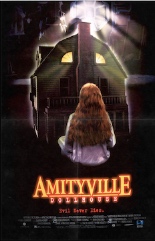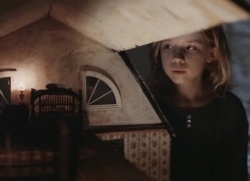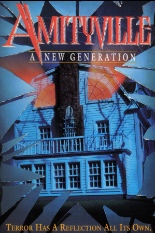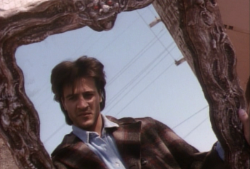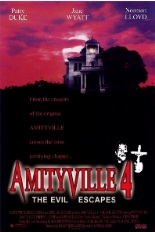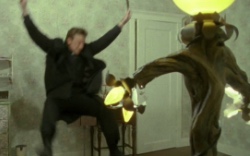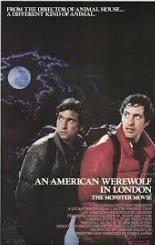
 When I was about 3 or so, my father was a Houston police officer; he would always get off work around 9 p.m., when my mother would have dinner waiting for him at home. Usually he would eat it in front of the television, watching the newest movie currently showing on HBO.
When I was about 3 or so, my father was a Houston police officer; he would always get off work around 9 p.m., when my mother would have dinner waiting for him at home. Usually he would eat it in front of the television, watching the newest movie currently showing on HBO.
He would often let me stay up and watch whatever was on with him, resulting in me seeing a lot of movies I was probably too young for, one of which was the lycanthropic horror comedy of An American Werewolf in London; it was a very influential film on me then, inspiring and influencing much of my pop-cultural life over the past 40-odd years.
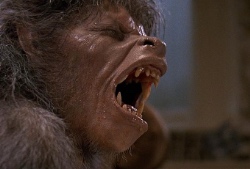 When backpacking friends David and Jack (David Naughton and Griffin Dunne, respectively) are traveling through the English countryside, after a rather uncomfortable drink at a pub called The Slaughtered Lamb, they find themselves ripped and shredded by a hairy beast while walking down the dark and dusky moors.
When backpacking friends David and Jack (David Naughton and Griffin Dunne, respectively) are traveling through the English countryside, after a rather uncomfortable drink at a pub called The Slaughtered Lamb, they find themselves ripped and shredded by a hairy beast while walking down the dark and dusky moors.
David wakes up in a hospital, under the care of Alex (Jenny Agutter), a nurse who falls in love with him way too quickly, but it still fueled my own Florence Nightingale fantasies during my own recent hospital stay. He also starts seeing the rotting corpse of Jack, warning him that he will change into a werewolf during the upcoming full moon, something that, sadly, did not happen to me during my own recent hospital stay.
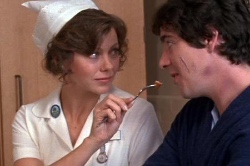 The scene where David does indeed change into the monster is still a thing of brutal wonder, one that when I was a kid made me firmly believe in werewolves and their bloody rampages through Piccadilly Circus. The very pre-CGI effects — courtesy of Rick Baker — still leave me speechless, wondering how they did that and ignoring any effects-based special features that would tell me.
The scene where David does indeed change into the monster is still a thing of brutal wonder, one that when I was a kid made me firmly believe in werewolves and their bloody rampages through Piccadilly Circus. The very pre-CGI effects — courtesy of Rick Baker — still leave me speechless, wondering how they did that and ignoring any effects-based special features that would tell me.
Directed by John Landis at the height of his filmic powers, An American Werewolf in London is a deft mixture of hilarity and horror, made concurrently with Joe Dante’s unrelated The Howling, which is also a must-see; try to avoid, however, the blasphemous 1997 sequel, An American Werewolf in Paris, a flick that even Landis had good sense to put a silver bullet in. —Louis Fowler

